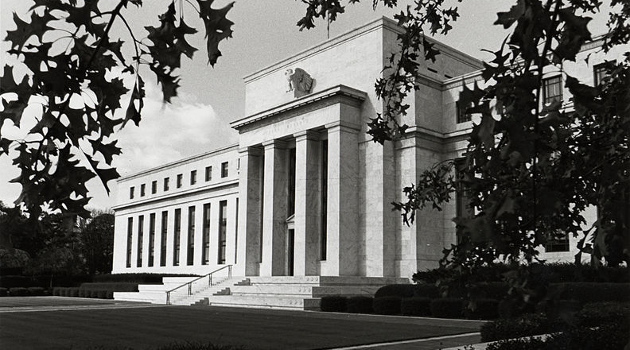Originally published by NewsMax on April 22, 2019.
The Federal Reserve is getting a lot of news coverage because of new nominations that President Donald Trump has put forth to serve on the Board of Governors.
But America’s central bank also should be in the news because the bureaucrats at the Fed are proposing a massive expansion of its power over the operation of real-time payment systems.
The Federal Reserve’s primary function is the management of the nation’s money supply. And it doesn’t even do a good job with that role. It has an incredibly poor track record, marked by economic instability, frequent asset bubbles, and inflation. Specifically, the Fed bears significant blame for the Great Depression, 1970s stagflation, and the 2008 financial crisis, among other economic disasters.
Such an ignominious track record does not support a case for expanding the power of the Federal Reserve, yet that is precisely what it is considering with a proposal to develop its own real-time payment system to facilitate transfers between banks, credit unions, and other depository institutions.
As monetary expert George Selgin explained in his submitted comments in response to the request for feedback on the proposal, the Board of Governors has historically held to the principle that payment services should be directly provided by the Reserve Banks only under strict conditions. The most salient requirement, in this case, is that the service is “one that other providers alone cannot be expected to provide with reasonable effectiveness, scope, and equity.”
As it so happens, a private system has already been established by The Clearing House Payments Company, owned by a cooperative of 25 banks, and it is growing at a reasonable pace. Their Real-Time Payments network offers 24/7 payment clearing and settlement in real time, improving upon the one-to-three-day lag that many retailers and financial institutions experience today.
There are also big-picture reasons to oppose government competition against the private sector.
In the short-term, government provision of services is inherently unfair to private competition given the vast resources, not to mention the ability to change laws to its own benefit, available to the government. This crowds out private firms and reduces overall competition in an industry. In the long run, that leads to higher costs and less innovation.
A key difference between the private sector and the government is not necessarily the propensity for error, but the degree to which feedback mechanisms hold them accountable. Because failure in the private sector is more punishing, problems are fixed sooner and are less likely to be repeated, while government agencies tend to be rewarded with higher budgets when they screw up under the perverse logic that any new problems they create provide further evidence of the need for government problem-solving.
There’s also a long-run problem. If the Federal Reserve expands its power over the payments system, that could be the precursor to intervention in other areas. What if politicians or bureaucrats then suggest that the Fed should make loans to selected companies? Or invest in selected sectors?
The arguments in favor of these types of intervention would be very similar to those we hear today in support of the Fed directly intervening in the payments market. Yet hopefully people would realize why it would be very risky to give the government such powers. Indeed, intervention by central banks is a common characteristic of some of the world’s worst economies.
The bottom line is that a ubiquitous real-time payment network in the U.S. is everyone’s shared goal. However, the Federal Reserve has failed to make a case for why it must step in to get the industry across the goal line. Its history of failure suggests an expansion of its power and even more control over the financial system is the exact opposite of what’s needed.
———
Image credit: Federal Reserve | United States government Work.

